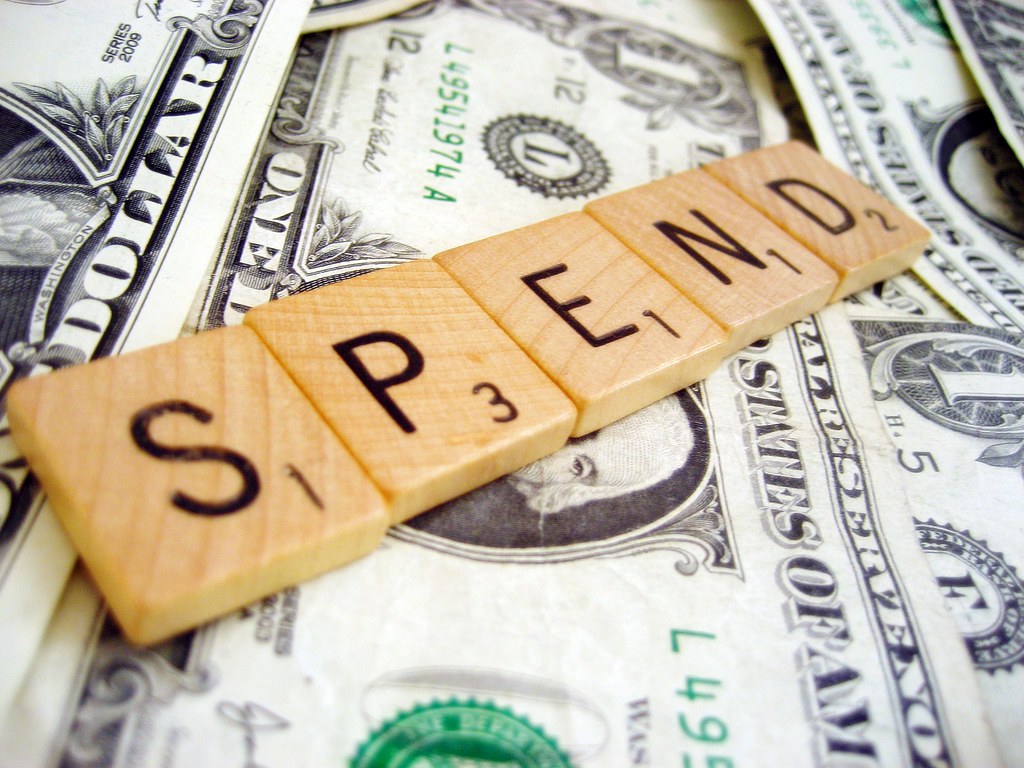The recently-reported 3.2 percent growth of the nation’s economy for the first quarter of 2019 was met by a wide variety of interpretations by business analysts. Some said it soothes fears of a coming downturn, while others looked below the headline figure for symptoms of weakness.
One aspect of the economy, however, that continues to be near universally accepted as an article of faith is that consumer spending makes up the overwhelming bulk of economic activity.
“Growth in consumer spending — which accounts for nearly 70 percent of the US economy — stood at 1.2 percent,” declared the New York Post. Similarly, PBS reported “One of the main factors holding back expectations is consumer spending. It accounts for about 70 percent of the U.S. economy.”
This assertion, however, is highly misleading. Economist and former Columbia University professor Mark Skousen has for years explained that GDP numbers exclude “a big chunk of the economy – intermediate production or goods-in-process at the commodity, manufacturing, and wholesale stages – to avoid double counting.”
Total spending including all stages of production more accurately reflects an economy’s actual expenditures, according to Skousen. When measuring total spending using business receipts compiled by the IRS, Skousen found that “consumption represents only about 30 percent of the economy.”
One of the key insights of Austrian economists is the emphasis on the multi-stage production structure. They recognize that the production of new goods typically involves several stages, each temporally more or less remote from the final consumer.
To use the classic case of a pencil: first the lumber must be harvested by lumberjacks, and the wood transported to a sawmill where the wood is shaved down into slats and glued together. The wood is combined with the lead, paint and eraser – each of which went through many phases of production themselves to arrive at the pencil factory.
Once completed and packaged, the pencils are shipped to retail outlets throughout the land, ready for purchase.
At each stage of production for each of the inputs, countless capital goods and complimentary goods, along with labor, are employed.
The purchase by the final consumer of the finished pencils is but a small tip of the iceberg relative to all of the money invested in the materials, factories, labor and equipment in the many stages of the production process.
As Skousen further explained, “Business spending on capital goods, new technology, entrepreneurship, and productivity are more significant than consumer spending in sustaining the economy and a higher standard of living.”
Indeed, the truth about the economy is just the opposite to what the business reporters tell us: Consumer spending is the effect, not the cause, of a productive healthy economy.
This faulty and misleading emphasis on consumer spending has been the source of destructive public policy for generations. The emphasis on “getting consumers spending again” overlooks the true foundation for economic growth: investment spending on production, as fueled by real savings.
This is especially true in times of recession. Calls to boost consumer spending to right the economic ship are misguided and harmful.
The true factor that drags the economy into recession (and keeps it there) is the sharp drop in investment spending.
For instance, according to the 2010 report of the president’s Council of Economic Advisers, private consumption spending dropped by only 2 percent from its peak in the fourth quarter of 2007 to its low point in the second quarter of 2009 during the Great Recession. Total private investment spending, however, began its much more significant drop nearly two years earlier. Total private domestic investment reached its high point in the first quarter of 2006 and then fell by roughly 36 percent to its low point in mid-2009.
Therefore, attempting to boost consumer spending is clearly the wrong approach. Diverting investment capital toward consumption spending via government borrowing only worsens the lack of investment actually causing the recession. And without investment in new equipment, factories, technology, etc., what will spur the recovery?
As economist Robert Higgs noted, “Worn-out equipment, obsolete software, ill-maintained structures and depleted inventories are not the stuff of which rapid, sustained economic growth is made.”
Jean-Baptiste Say wrote in his 1803 book A Treatise on Political Economy: “it is the aim of good government to stimulate production, of bad government to encourage consumption.” Today’s politicians would be wise to heed Say’s words.
Bradley Thomas is creator of the website Erasethestate.com, and is a libertarian activist who enjoys researching and writing on the freedom philosophy and Austrian economics.
Follow him on twitter: ErasetheState @erasestate







